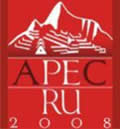United Kingdom
| Welcome |
| Peru in Brief |
| History |
| Geography |
| Government & Politics |
| Maritime delimitation between Peru and Chile |
| News |
Links |
OF THE FORTY VICEROYS WHO GOVERNED PERU DURING THE COLONIAL PERIOD, THREE HAD EXCEPTIONAL STATURE. |
||
Francisco de Toledo, the fifth viceroy (1569-1581), set up the colonial administration, enacted the laws governing native tributes and labour, and founded the Mint ( Casa de la Moneda). The Inquisition and a college for the scions of the old Inca aristocracy were also established in Peru under his rule. |
||
Manuel de Amat y Juniet, the thirty-first viceroy (1761-1776), founded the royal college of San Carlos and oversaw the construction of the fortress known as the Real Felipe. His administration built the royal customs houses, remodeled two large avenues (Alameda de Acho and Alameda de los Descalzos), opened a third (Paseo de Aguas) and built Plaza de Toros de Acho, the world's fourth bullring. Expeditions to Tahiti preceding the voyages of Captain Cook were organised by Amat y Juniet . The viceroy is also remembered for his passionate liaison with Micaela Villegas ("La Perricholi"), a mestizo woman from Huanuco whose life inspired painters, writers and musicians – including Offenbach , who named one of his operas after this celebrated Peruvian beauty. |
||
Confronted by mounting independence movements throughout the continent, the thirty-eighth viceroy Fernando de Abascal y Sousa (1806-1816) ensured that Peru remained the bastion of Spanish rule in the Americas. Revolts led by Francisco de Zela, Juan Jose Crespo, Enrique Paillardelli, the Angulo brothers and Mateo Pumacahua were all crushed by his government. |
||
| In 1824 Spam's last viceroy in Peru, La Serna, surrendered to General Antonio Jose de Sucre after being defeated in the battle of Ayacucho. Nearly three centuries of Spanish dominion had come to an end on that day. |
||
|
<BACK> |





